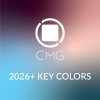 The Power of Color
The Power of Color
Color offers a quick and impactful strategy to communicate a message without words. Brands and color are intrinsically linked because color motivates the human subconscious. When it comes to recognizing a brand, color is what people remember. In essence, color charts a symbolic relationship to every aspect of life.
Consequently, color is interpreted by personal experience. These influences create emotions to perceive and persuade in the decision-making process. The human brain makes associations with certain colors to bridge the gap when it comes to marketing persuasion. Often times, the same colors pop up again and again because the audience connects the color with a need or expectation. While color is ubiquitous, judicious use of color can contribute and influence mood and feelings, positive and negative.
Color speaks louder than words. The associated color of a product can convince consumers that it tastes better than a product of a different color. In some cases, color is the sole factor in impulse choices. However, the same is true when it comes to poor color choices, it can turn off users to a website, product, or service, with no chance of a return visit. When colors are a bad fit, like orange for a bank, or pink for law enforcement, they feel wrong because they don’t match preconceived expectations.
Why Does Color Matter?
In marketing, there are countless ways to use color to communicate with buyers, but it all comes down to biological programming. As creatures of habit, we are programmed to respond to color. Nature teaches color by design, like bright red fruits are ripe and ready to eat. People see color and expect a certain result. The same concept applies when they make a purchase decision based on what they see and if they feel the colors are performing in the manner they like.
Color associations is just one way to communicate with a target audience through color. Here are three examples of color associations:
Red is symbolic of the heat of energy, passion and love.
When angry, we “see red” and red is iconic for power and danger. Examples of the power of red include, human blood, stop signs, and fire trucks. Red supposedly stimulates appetite, which is why it’s popular in fast food chains which combine red with another primary color, like yellow.
Blue is a serene and tranquil color that represents intellect and responsibility.
However, shades of blue create a range of associations from relaxed and peaceful to a powerful and authoritative. It is the most popular color in the world, both when it comes to personal preferences and usage in business logos.
Green is commonly associated with nature.
With a direct correlation to plants, tress, and grass, green is also a symbol of growth and renewal. Prosperity is also associated with green since after all, money is green. Green invokes a sense of balance and a relaxing influence when used for marketing.
How does color affect product development?
The process for product design and development starts and ends with color. With the remarkable ability to make or break the success of a product, color doesn’t cost any more to take the time to choose the right one from the start. The right color can make all the difference in a product’s success. If the wrong color is chosen, it could impact the overall performance from the start.
Color choice in product design is not just an artistic option, but a business decision that represents a collective association to connect with consumers. When a new product line is considered, color plays a critical role in how it reaches an individual on a personal level. It all starts with a clear understanding of how color connects products with the attitude and function that users desire. In essence, use logic for color choices, rather than personal feelings or attitude.
Fundamentals of Product Design & Development
Consider the following five fundamentals in the product design and development:
History
Look at the history of the client or product and what makes it exceptionally unique. An insight into the background of the client or company can lend itself to a successful color choice. While every brand history is different, be sensitive to the brand identity and how to set them apart from the competition.
Competition
Research the common colors used by competitors and avoid similarities. This step ensures the product design is distinct and doesn’t violate plagiarism of style, color, and function of a similar product. Ultimately, with a clear understanding of the competition, efforts to build a product line that is sustainable with a smart color choice is assured.
Psychology
Learn how color affects the target audience. Combine the power of visual impact with physical response to create a color combination that inspires and stirs excitement. Don’t rely on personal experience for color because it could be completely different from the experience someone in the target audience would encounter. This is especially true if the product is for an international audience.
Culture
Explore the culture of the target audience. Color is like another language, and if misrepresented could lead to a disingenuous attitude or feeling about the product. For this reason, invest time into learning about the colors close to the culture.
Audience
Investigate the target audience and communicate color in ways that relay a message easily recognized by the colors used. For example, children ages 2-6 prefer different colors to kids between the ages of 7-10. The same holds true for all age groups, color schemes and combinations rely on experience and attitude to stir emotion and memory.
Color in marketing is not an exact science but it is a powerful attribute. Visual symbolism reflects the corporate message without the use of words. With a clear understanding of color perceptions across different audiences and cultures, marketing with color is an intricate part of brand representation and reputation.













